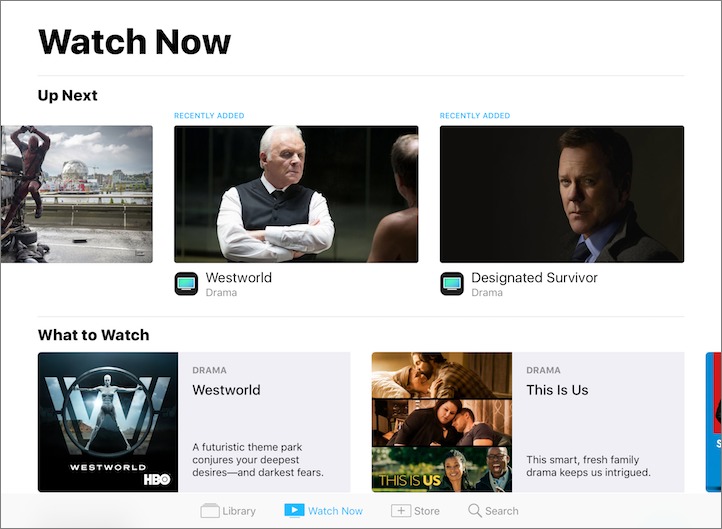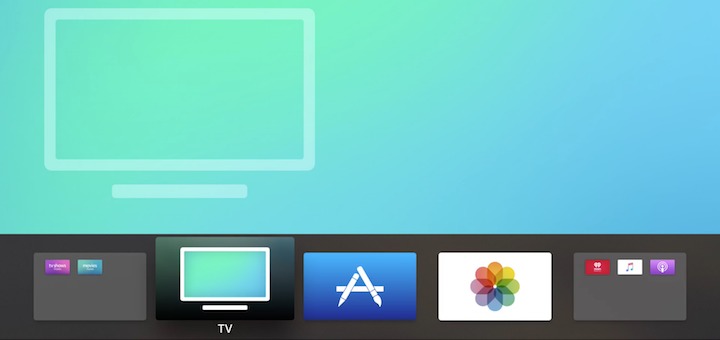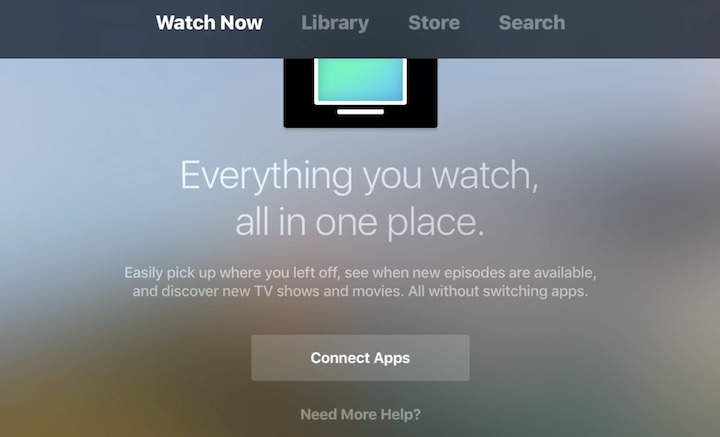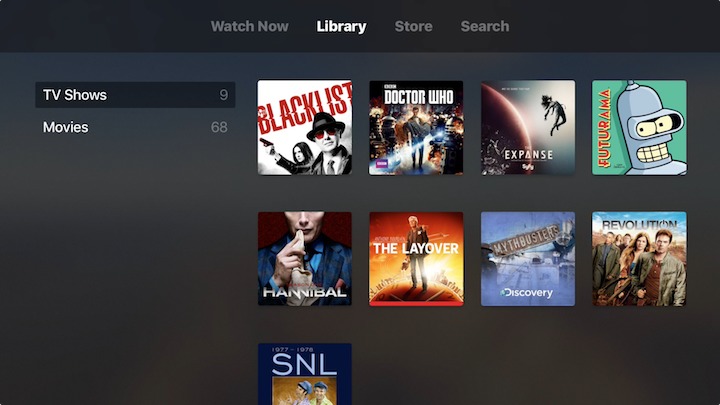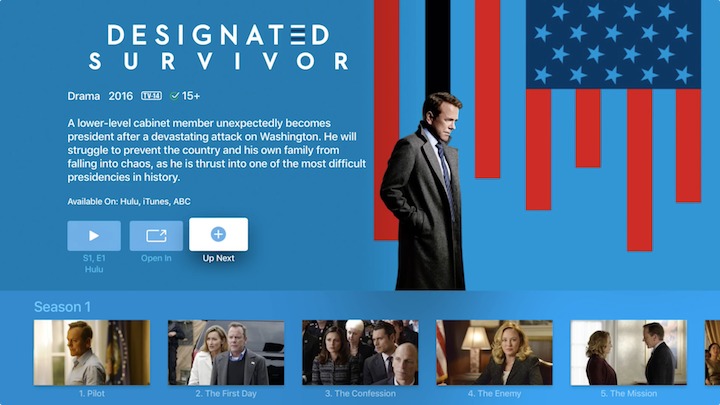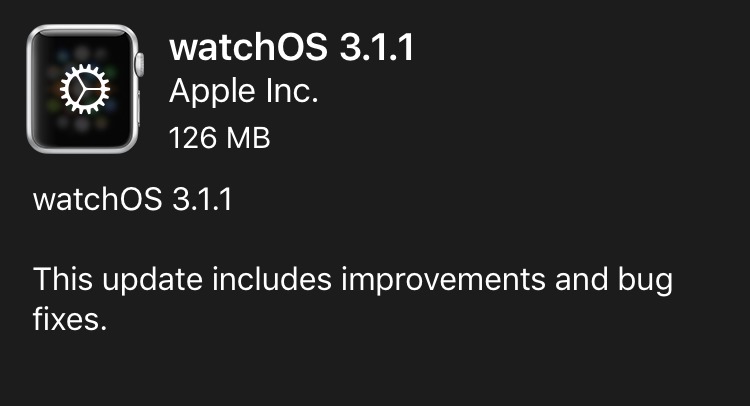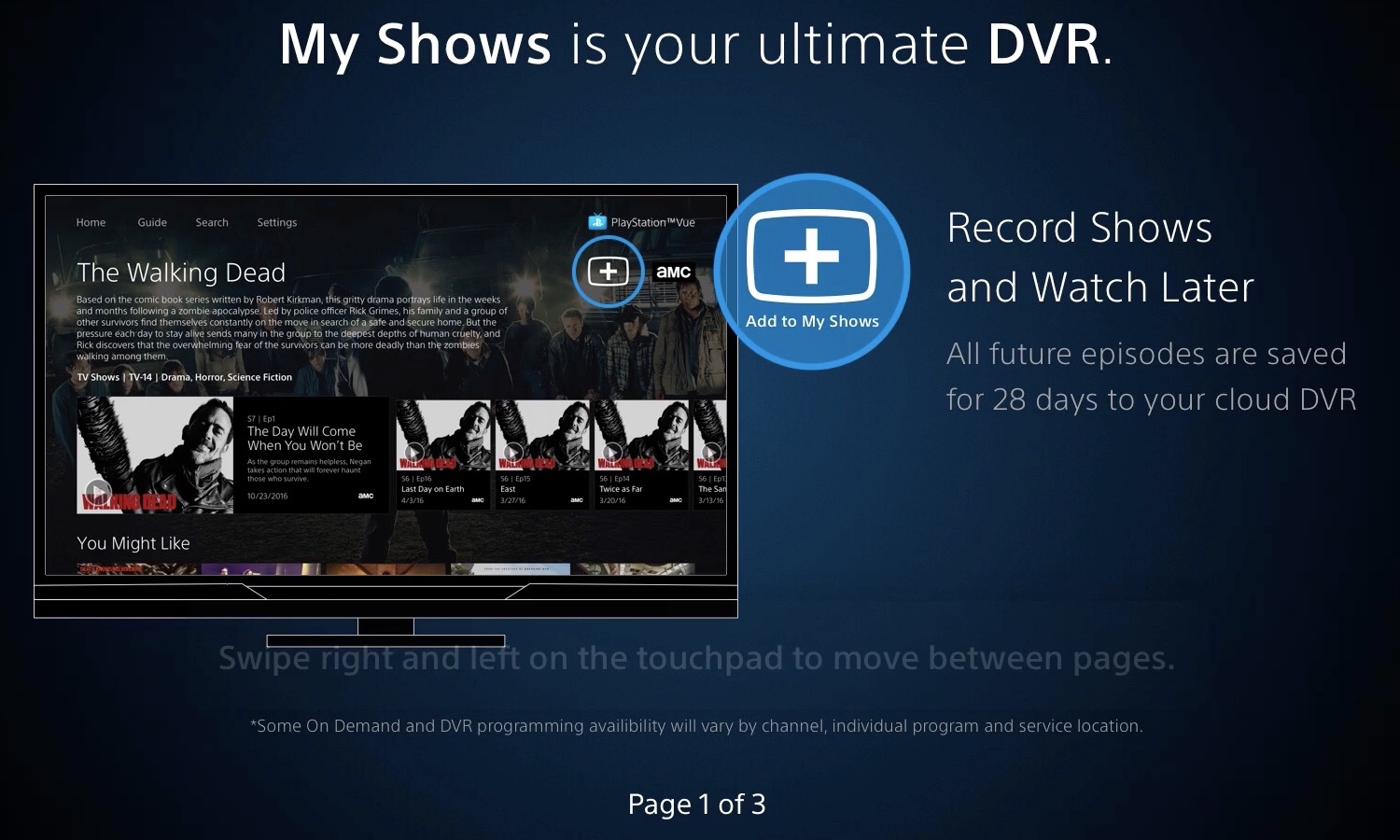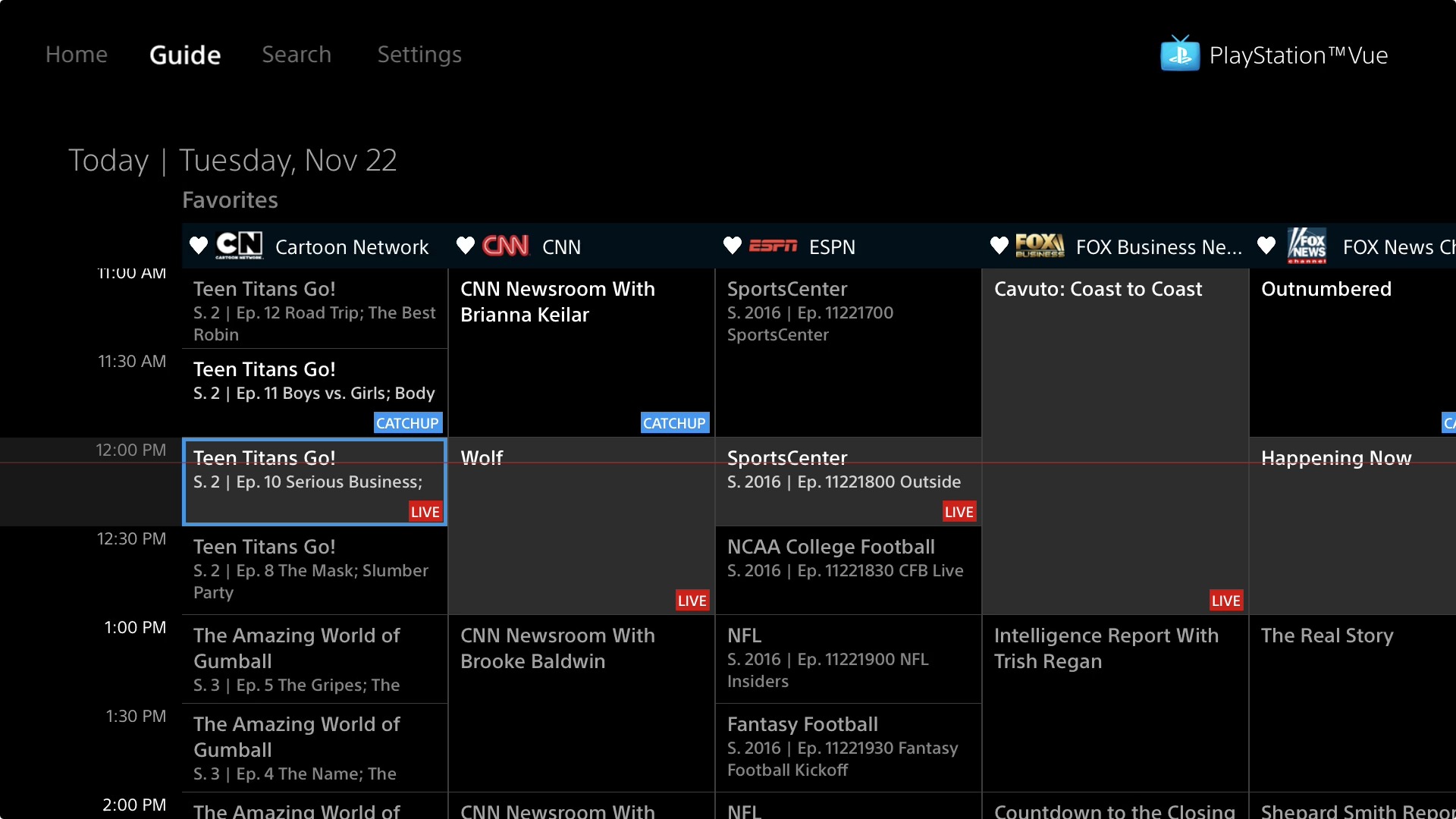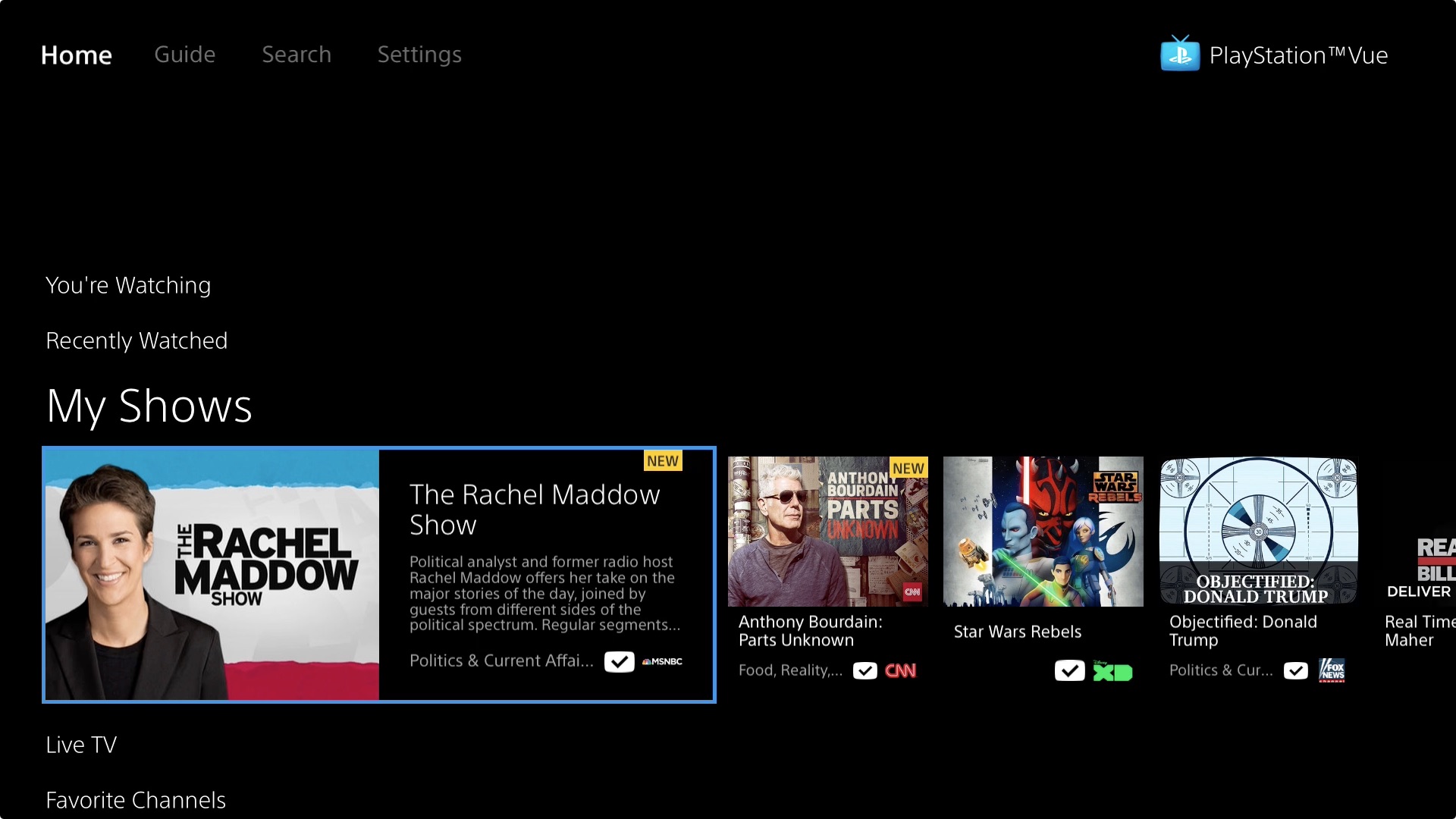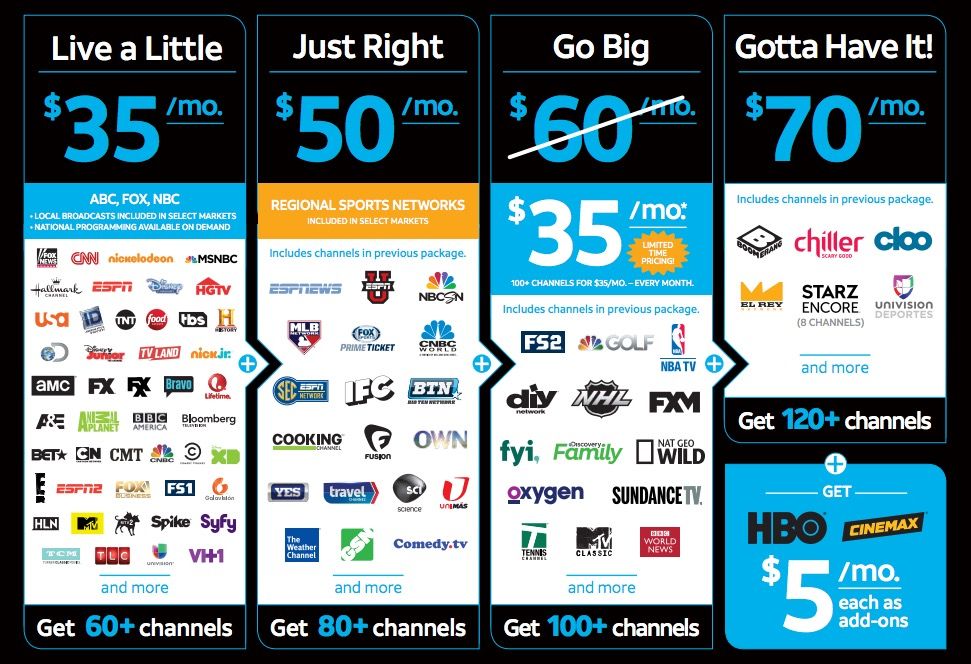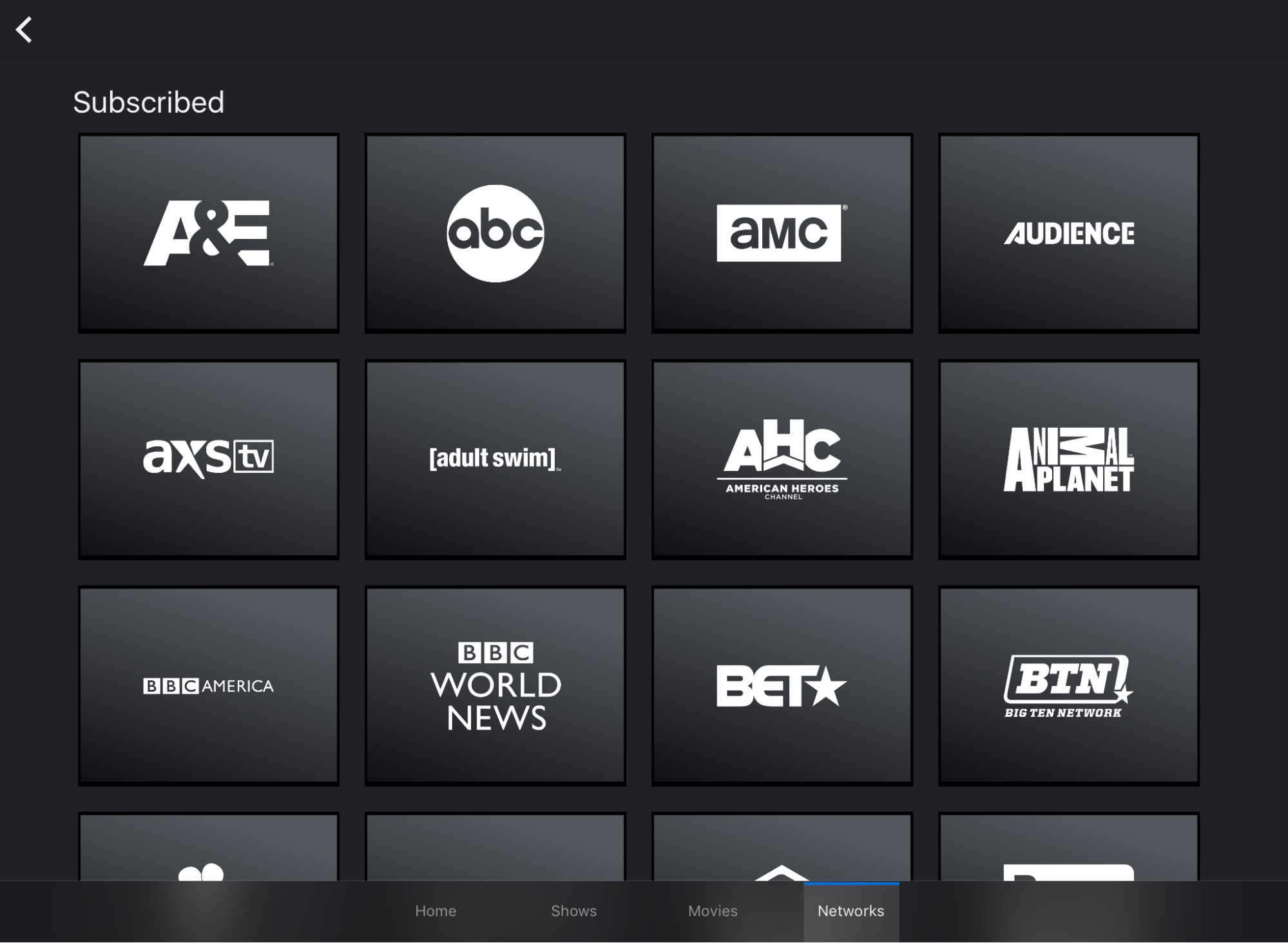TidBITS#1349/12-Dec-2016
This is our last issue of TidBITS for the year, so we’d like to thank everyone who makes what we do possible. Until the next email issue on 2 January 2017, keep an eye on our Web site for new articles. Another sign of the season is the WinterFest sale, in which you can save 25 percent on both Take Control books and 14 of our favorite Mac productivity apps. As we were putting this issue to bed, Apple released three notable operating system updates — iOS 10.2, tvOS 10.1, and watchOS 3.1.1 — so we scrambled to explain what’s new, with a focus on the new TV app for iOS and tvOS. Next, Josh Centers reviews the Mangobeat iPhone amplifier, and Michael Cohen examines Apple’s new iBooks StoryTime app for the Apple TV. We wrap up the issue and the year with reviews of two TV services — PlayStation Vue and DirecTV Now — for those who want to stop paying so much for cable TV. Notable software releases this week include BusyCal 3.1.3 and BusyContacts 1.1.5, SpamSieve 2.9.27, Little Snitch 3.7.1, PDFpen and PDFpenPro 8.3, and Lightroom CC 2015.8 and Lightroom 6.8.
TidBITS 2016 Gratitude and Holiday Hiatus
The end of December draws near, and this marks our final email issue of TidBITS for 2016. We’ll be wrapping things up for the rest of the week, so keep an eye on our Web site for new articles, but after that, it’s time for us to descend into holiday hibernation, and I hope you get a chance to do the same.
As is our custom, we’re taking the last two weeks of the year off from publishing TidBITS so we can spend more time with family and friends, reflect on the past year, and think about what we want to accomplish going forward. The next email issue of TidBITS will come out on 2 January 2017.
We’re closing out 2016 buoyed by all the new and renewing TidBITS members — to everyone who supports our efforts, thank you so much! It means a great deal to us that we get to create practical, helpful information for you rather than chasing rumor and controversy to attract eyeballs. If you’re on the fence about joining the TidBITS membership program, note that I’ve been working hard to negotiate more discounts on high-quality Mac apps for you, bringing the total to 84 great products. Recent arrivals include:
- Nisus Writer Pro and Nisus Writer Express from Nisus Software
- Swift Publisher, Get Backup Pro, and Concealer from BeLight Software
- Moneydance 2017 from The Infinite Kind
- HoudahSpot, HoudahGeo, and Tembo from Houdah Software
- Tinderbox and Storyspace from Eastgate Systems
- Bookends, reference management software from Sonny Software
- Aeon Timeline, visual timeline software from Scribblecode
Of course, we’re always grateful for our long-term corporate sponsors: Smile and ScanSnap.
Tonya and I are also thankful for the highly capable and amiable assistance of Josh Centers, Michael Cohen, Agen Schmitz, Julio Ojeda-Zapata, Glenn Fleishman, Joe Kissell, Jeff Carlson, Rich Mogull, and Lauri Reinhardt, along with the many Take Control authors and editors. You’re all fantastic, and while we try to express our appreciation regularly, we wanted to thank you here in public as well.
Funding from TidBITS members enabled us to commission numerous articles this year, and our thanks to those who broadened and strengthened the voice of TidBITS, including Jeff Porten, Geoff Duncan, Andy Affleck, Kirk McElhearn, Randy Singer, Steven Aquino, and Mike Matthews. Our gratitude also goes out to the tireless volunteers who translate TidBITS into Dutch and Japanese each week, to those who leave comments on articles and participate in SlackBITS and TidBITS Talk, and to everyone who finds time to read what we write.
Thank you, one and all, and may all your holiday wishes come true.
WinterFest 2016 25%-Off Sale on Take Control Books and 13 Mac Apps
Now that we’re firmly ensconced in the holiday shopping season, we have again joined forces with small indie developers who produce useful Mac apps for the simple, gimmick-free WinterFest sale. Through 10 January 2017, you can save 25 percent on all Take Control titles, each going far beyond potentially unreliable or obsolete articles to help you (or that friend or relative who keeps calling) in a variety of ways:
- Learn more about WinterFest apps: When we talk about how WinterFest is collaborative, we mean it. If you’re considering buying some of the cornerstone apps in the WinterFest sale, such as DEVONthink Pro, PDFpen, and Scrivener, we have recently updated books, created in partnership with those developers, that will help you get started and become proficient quickly.
-
Stay current with Apple’s latest: Whether it’s Sierra or iOS 10, watchOS 3 or tvOS 10, we have books that both delve into new features and make sure you’re not missing out on other recent or significant changes.
-
Get more productive with your apps: Our catalog extends to many other apps. We want to make you better at what you do with books about apps like 1Password, Audio Hijack, Dropbox, Parallels Desktop, and Slack. We also cover plenty of Apple apps, including iTunes, Photos, and Preview, and we even have comprehensive documentation of Pages, Numbers, and Keynote.
-
Make your Mac work better: Our friend Joe Kissell recently released some new and updated Joe On Tech titles that explain how you can back up, speed up, maintain, and troubleshoot your Mac.
The WinterFest sale also includes a curated collection of 13 apps, some of which we rely on daily. If you use your Mac to do serious work, do yourself a favor and invest in the tools that let you most effectively convey your ideas to the world. You can combine these apps for even more power; the developers have suggested some ways to link their various apps.
- You can plot out the chronology of any story with Aeon Timeline.
-
Every TidBITS article is edited in the powerful text editor BBEdit.
-
If references are essential in your writing, check out Bookends for help with collecting, annotating, curating, and citing published information.
-
DEVONthink Pro Office is a superb tool for storing notes and research materials, and it’s a vital part of Joe Kissell’s paperless office strategy.
-
Build precise searches and find your files faster with HoudahSpot.
-
For long, complex documents and macro-driven text manipulation, the word processor Nisus Writer Pro is unparalleled — we create all Take Control books in it.
-
When it comes to editing PDFs, Smile’s PDFpen hits the sweet spot between Apple’s free Preview and Adobe’s pricey Acrobat Pro.
-
Literature & Latte’s Scapple helps you record and connect ideas, and Scrivener enables you to turn your research and ideas into a polished manuscript.
-
Create plain text to-do lists with the outlining capabilities of TaskPaper.
-
TextExpander saves you from typing out frequently used words and phrases, and Tonya and I both use it heavily.
-
Eastgate Systems’ Tinderbox helps you organize, plan, and map your thoughts, and Storyspace is the app in which I wrote my senior honors thesis about Hypertextual Fiction at Cornell University way back in 1989.
For more information about each app and to take advantage of the 25 percent discount, start from the main WinterFest page. Make sure you use the WINTERFEST2016 coupon code when ordering.
Thanks for supporting Take Control and these artisanal software developers!
iOS 10.2 Adds TV App, HomeKit Notifications, New Emojis
Apple has released iOS 10.2, which includes the new TV app, new emojis, a smattering of new and enhanced features, and a plethora of bug fixes. You can install the roughly 360 MB update via Settings > General > Software Update or through iTunes.
The marquee new feature, at least for U.S. users, is the TV app, which replaces the Videos app (see “Apple’s TV App Seeks to Unify the Apple TV Experience” 27 October 2016). TV integrates video content from multiple apps, such as iTunes, HBO NOW, and Starz, so you have one place to access all of your shows — except those in Netflix, which doesn’t yet support the TV app. You can add shows to an Up Next list, which keeps track
of the programs you’re following and syncs between your Apple devices. The TV app is also available in tvOS 10.1 — see “tvOS 10.1 Unifies the Apple TV Experience with “TV” App” (12 December 2016). If you sign into iTunes with an Apple ID account based outside the United States, you won’t get the TV app and the Videos app will remain.
For people who prefer communicating with pictures, iOS 10.2 adds over 100 new emoji, including bacon, clowns, and whiskey. These additions come just in time for my 2016 year in review.
Those who are dipping into home automation will appreciate iOS 10.2’s HomeKit improvements — notably the addition of notifications. Now, HomeKit devices like motion detectors, door and window sensors, and water leak sensors can send you notifications. Also, HomeKit vendors can send you notifications when your HomeKit accessories have software updates available.
Plus, iOS 10.2 reportedly improves Bluetooth performance and connectivity with third-party devices. That should help with both HomeKit sensors and a whole range of other accessories.
Apple focused attention on Photos in iOS 10.2, improving stabilization and frame rates for Live Photos, beefing up the accuracy of photo grouping in the People album, supporting more raw image formats, and fixing some bugs.
Messages features two new screen effects — Love and Celebration — which you can access by entering your message to an iMessage user, pressing and holding the blue arrow icon to access effects, tapping the Screen tab, and then swiping from right to left. Messages also fixes an issue that sometimes prevented the keyboard from showing.
In the Music app, Shuffle, Repeat, and Up Next are now easier to access from the Now Playing screen in iOS 10.2 — just swipe up. You can also now choose how to sort Albums, Playlists, and Songs in Music’s Library screen.
The News app sports a few improvements, including an icon in stories that lets you jump to the next story. Plus, articles from paid sources will now be featured under For You.
Mail receives fixes for an issue that caused the Move sheet to persist after filing a message, problems with long presses activating copy and paste, and a bug that would select the wrong message after you deleted a conversation.
Those who rely on iOS’s accessibility capabilities may appreciate the addition of BraillePen14 to VoiceOver and fixes for the Braille table switching unexpectedly with VoiceOver, Siri’s enhanced voices sometimes not being available, and Switch Control being unable to delete voicemail messages.
iOS 10.2 also includes fixes for issues that would show FaceTime participants out of focus, prevent Visual Voicemail from playing, cause Safari Reader articles to open as empty pages, and crash Safari after you marked a Reading List item as read. Finally, iOS 10.2 also includes fixes for 12 security issues.
The changes in iOS 10.2 are sufficiently widespread that we encourage some level of caution — wait a few days and check the online discussions before installing to make sure the update doesn’t cause other problems.
tvOS 10.1 Unifies the Apple TV Experience with “TV” App
Apple has released tvOS 10.1, which introduces the new TV app, but only for U.S. users (see “Apple’s TV App Seeks to Unify the Apple TV Experience,” 27 October 2016). You can update your fourth-generation Apple TV by going to Settings > System > Software Updates.
After the update, you’ll notice a new app on your Home screen: TV, which Apple intends as a central place to view content from a variety of sources. You might also notice that the Home button on your Siri Remote now behaves differently. One press takes you to the Up Next screen of the TV app. A second press returns you to the Home screen. You can change this behavior in Settings > Remotes and Devices by toggling the Home Button switch. Or, keep the Home button (whose icon does look like a TV) as the new TV button and get used to long pressing the Menu button to return to the Home screen.
When you first open the TV app, it displays the Watch Now screen, where you’re prompted to connect compatible apps, if you have any installed. Click Connect Apps and follow the prompts to do so. The apps that I had installed that work with TV are CBS, CW Seed, FXNOW, HBO NOW, Hulu, and The CW. Unfortunately, Netflix doesn’t yet work with TV, which will prevent many Apple TV users from using the TV app as much or at all.
The TV app’s interface has four screens:
- Watch Now: Look here to see recommended content and your Up Next list.
-
Library: This screen lists the movies and TV shows you own in iTunes. While TV effectively replaces the iTunes Movies and iTunes TV Shows apps, they remain on the Home screen.
-
Store: This screen features movies and TV shows available from iTunes, as well as apps that are compatible with the TV app.
-
Search: Here you can search for available content and see trending movies and TV shows.
The lynchpin of the TV app is the Up Next list, which contains the movies and shows you want to watch. To add an item to Up Next, open its listing, and click Up Next. Your Up Next list appears at the top of the Watch Now screen, and you can also access it from the TV app billboard on the Apple TV’s Home screen.
As with Siri search results, you can watch the program in the app of your choice — for instance, I can watch “Designated Survivor” via ABC, Hulu, or iTunes.
Another new feature in tvOS predates tvOS 10.1 slightly. Single Sign-on, which was promised for tvOS 10, went online a few days ago. The premise is simple: activate a TV subscription through one provider, like Dish, and all compatible apps can now be activated with a simple click instead of a tedious authentication process. To do that, go to Settings > Accounts > TV Provider > Sign In.
Unfortunately, Single Sign-on supports only a handful of TV providers, including DirecTV, Dish, Hawaiian Telcom, and Sling TV. However, if both your TV provider and the relevant app support Single Sign-on, activating an app is as easy as clicking OK when prompted.
With these updates, it’s time once again to update “Take Control of Apple TV,” your ultimate guide to all things Apple TV. You can expect that update, which will be free for existing owners, in a few days.
watchOS 3.1.1 Fixes a Handful of Bugs
Apple is closing out the year with updates to most of its operating systems, and the least significant is undoubtedly watchOS 3.1.1, which lists just seven bug fixes in its release notes. The update resolves problems with:
- An inability to respond to notifications
- Contact names not appearing in the Messages app and notifications
- The Stocks watch face complication failing to update
- Activity rings not showing on the Activity watch faces
- Incorrect dates displaying in the Calendar app’s month view
- The Maps app staying active after navigation has ended
- Analog watch face dials disappearing after changing the temperature unit in the Weather app
watchOS 3.1.1 also includes a pair of security updates.
The update, which you find in Watch > General > Software Update on your iPhone, is a 126 MB (original) or 131 MB (Series 2) download. Remember that upgrading requires your Apple Watch to be in range of your Wi-Fi–connected iPhone, connected to its charger, and charged to at least 50 percent. The update will likely take longer than you expect, so allot at least an hour.
Mangobeat Amplifies iPhone Volume Naturally and Sustainably
Here’s a common problem: you’re doing stuff around the house and want to listen to music from your iPhone. There are numerous ways to do that, but many of the obvious ones have downsides. You could:
- Just listen to the iPhone’s speakers. That might be OK on an iPhone 7, which has stereo sound, but older iPhones don’t have as good volume or sound quality.
- Connect to wireless Bluetooth speakers, but good ones are expensive, and even those don’t sound great, plus you’ll have another battery to charge.
-
Use headphones, but wired headphones snag easily, and wireless ones tend to be expensive and have battery issues.
-
Plug into wired speakers, which can be a good solution but requires more setup. And, of course, new iPhones will need a Lightning-to-headphone adapter.
-
Stream over AirPlay to an Apple TV or to an AirPort Express base station connected to a stereo. That works but isn’t cheap or quick to set up, can suffer from audio dropouts, and may be on the way out if Apple stops making AirPort base stations.
-
Stream to a Chromecast Audio device, but it has to be plugged into wired speakers, and Chromecast doesn’t work with Apple Music.
-
Stream to a Sonos system, which is reportedly excellent, but by far the most expensive of these solutions.
Happily, there’s a simpler, cheaper solution for casual listening, one that requires no electricity and looks good in your home or office. Enter the Mangobeat, the brainchild of Germain Ekamby in Alpharetta, Georgia.
The Mangobeat is an all-natural, wooden amplifier for your iPhone. It’s carved from Thai mango wood grown in sustainably managed forests, thus the name.
Simply set your phone down in its leather slot and the Mangobeat’s horn-like shape does the rest. Don’t worry about the Mangobeat rolling off your counter, because it has flat spots milled on the bottom to prevent that. It’s that simple, and it works great. The slot holds iPhones of any size, even my beefy iPhone 7 Plus in Apple’s leather case.
I showed off the Mangobeat on a recent MacJury holiday gift guide episode.
Mangobeat won’t compete with a high-quality powered speaker, but the improvement in volume and clarity over the phone’s unassisted speaker is clear. Better yet, it’s a durable conversation piece that’s always available. You never have to worry about whether the batteries are charged, if a cable is handy, or if your network will flake out. I’d say that it’s plug-and-play, but you don’t have to plug anything into anything else.
I purchased my Mangobeat directly from Germain Ekamby at the Gatlinburg Craftsmen’s Fair a few months ago, and it has been a constant companion in our kitchen ever since (you can order yours through Etsy). It’s extremely durable and has withstood all the abuse our three-year-old has thrown at it, without even a scratch.
The Mangobeat comes in a variety of colors and designs, and costs just $35.99. Whether you’re looking for a way to improve ad hoc iPhone listening or are searching for an affordable and unusual gift that won’t suffer from any compatibility issues, the Mangobeat is worth a look.
iBooks StoryTime Brings Read-Aloud Books to Apple TV
Last month, with virtually no fanfare, Apple released a new app for the Apple TV that brings ebooks to your TV screen. However, don’t expect to read David Foster Wallace’s “Infinite Jest,” Ron Chernow’s “Alexander Hamilton,” or most of the other books in your iBooks library on your 52-inch HDTV. Dubbed iBooks StoryTime, the app is designed for one particular type of ebook: a Read-Aloud book.
A technology used mostly for children’s books, Read-Aloud is one of the names used to describe an ebook that employs “media overlays” as outlined in the EPUB 3 specification. (If you are curious, Alberto Pettarin’s detailed blog post on the format can provide all the geeky details you desire.)
Such ebooks include not only text and pictures but also a recorded audio soundtrack that’s synchronized to the words on the page, turning the book’s pages as it goes. Most Read-Aloud books highlight the text being read, either word-by-word or line-by-line.
Apple sells a variety of Read-Aloud books in the iBooks Store and targets just about all of them at young readers. Note that if you already have purchased such books from Apple, they automatically appear in the iBooks StoryTime collection in the app — Apple has been selling such titles for a while now. If you don’t have any yet, don’t worry, Apple will offer you a free Dora the Explorer book when you first open the app.
As an app designed for young readers, iBooks StoryTime has an exceedingly simple interface. You click to open a book from your iBooks StoryTime library and click to have the app start reading. Depending on the app’s settings, the app reads the book aloud and you just sit back and let it play. A press on the Siri Remote’s Play/Pause button starts or stops playback; a swipe or tap on the Siri Remote’s touchpad turns pages back or forward. For a quieter experience, the app’s settings menu (to see it, swipe down on the touchpad while reading a book) lets you disable the Read-Aloud feature.
Such a minimal interface might still be too much for some young readers, and many parents might be reluctant to put a fragile $79 Siri Remote in the hands of someone who could decide to chew on it, throw it across the room, or drop it in the aquarium so the neon tetras can enjoy the book too. Apple understands such concerns and assumes that enjoying a Read-Aloud book will be a shared experience between child and parent: the marketing line for iBooks StoryTime in the Apple TV App Store says “Experience your kids’ favorite Read-Aloud books together on a large screen.”
Regardless, parental concerns remain. Those who are already concerned about screen time will likely want to avoid increasing that total by adding Read-Aloud books to it. Not many parents have the time or patience to sit with their beloved child for the eleventh trip of the day through “Green Eggs and Ham” — not even with a fox, not even in a box. But is letting iBooks StoryTime take over a parental responsibility a good idea? Is it then just another digital babysitter?
When he learned about iBooks StoryTime, TidBITS publisher Adam Engst expressed some degree of horror about the concept, having spent years reading books to his son (who is now a high school senior applying to college). Adam pointed out that merely having words be visible and read out loud is only the most mechanical aspect of reading to one’s children. Other advantages of doing the reading yourself include the physical closeness of having a kid on your lap, turning the pages together, discussing what’s going on in the book, and varying things like tone, volume, and reading speed. Plus, Adam said he and Tonya read hundreds of different books to Tristan, and although they still have shelves of such books, many more were borrowed from
the public library rather than purchased.
It seems that the release of iBooks StoryTime is, first and foremost, yet another way for Apple to sell more media online, this time to young children… and just in time for the holidays, too! Nonetheless, some parents may welcome anything that can help their child learn to read, and as a digital babysitter, iBooks StoryTime may be a better option than many videos or game-like apps on even-more-breakable iPads or iPhones.
iBooks StoryTime could become a hit, but it’s far more likely that it will be just another ebook-related initiative that captures Apple’s attention for a few months before being relegated to a shelf in the back.
PlayStation Vue Wins Cord-Cutter Option for News and Sports
Now is an exciting time in the world of television. We’re seeing ever more options for cord cutters who want to watch live TV, such as Sling TV (see “Sling TV, a Cord Cutter’s Delight, Arrives on Apple TV,” 6 July 2016) and the new DirecTV Now (see “DirecTV Now Joins the Scrum of Cord-Cutting TV Services,” 9 December 2016). But at the moment, there’s a third service I prefer over both: Sony’s PlayStation Vue.
PlayStation Vue has improved rapidly since its debut in March 2015. Initially limited to just a few cities and even then only to those with PlayStation game consoles, the service is now nearly as ubiquitous as Sling TV, with clients for the Apple TV and iOS, plus Android, Android TV, Amazon Fire TV, Roku, and the Web (where it sadly requires Adobe Flash).
Ten Things I Love About PlayStation Vue — I’ll share a few of PlayStation Vue’s details below, but let me start off with a list of what I like about PlayStation Vue.
- For my needs (news and sports), PlayStation Vue is about $10 per month cheaper than Sling TV. The PlayStation Vue packages are also simpler than Sling TV’s. Instead of Sling TV’s confusing Blue and Orange levels with different restrictions, PlayStation Vue offers the usual package tiers seen with cable and satellite providers and DirecTV Now.
- You can stream content on up to five devices at once, so everyone in the house can watch their favorite shows. Or, if you’re like me, you don’t have to miss any football when you’re away from the couch. Sling Orange is limited to one stream, while Sling Blue is limited to three streams. DirecTV is a bit simpler than that, but is limited to only one stream.
-
I prefer PlayStation Vue’s channel selection, especially for news and sports. For instance, MSNBC is a $5-per-month add-on with Sling TV but is included in my PlayStation Vue package for no extra charge.
-
PlayStation Vue has a cloud DVR feature that works with most channels, as well as better support for on-demand content than Sling TV. (Sling TV just launched a DVR feature, but it’s a limited beta.)
-
You can pause, rewind, and fast forward almost all channels, unlike Sling TV, which offers those features only for a handful of channels.
-
PlayStation Vue lets you set up multiple profiles, so you can share an account with others while maintaining your own favorite channel and show lists.
-
I prefer the PlayStation Vue interface, which is consistent across platforms and mostly limited to a single screen, unlike Sling TV, which is spread out over several screens.
-
PlayStation Vue will activate almost all apps that require TV provider authentication, so in that sense, it integrates with the Apple TV better than Sling TV or DirecTV Now does. However, unlike Sling TV, it doesn’t yet support the new Single Sign-on feature in tvOS 10.
-
If you subscribe to HBO via PlayStation Vue, it activates with the independent HBO NOW instead of the TV-provider-required HBO GO. If you cancel PlayStation Vue later, it’s easy to keep your HBO NOW subscription, since it’s a separate account. And this way, if HBO NOW goes down during a big event (like an episode of “Game of Thrones”), you can still watch your shows with PlayStation Vue.
-
In some markets, though not mine, PlayStation Vue offers local broadcast content, which is essential for sports and local news. Sling TV offers few local broadcast options, and DirecTV Now’s local broadcast offerings are even more limited than PlayStation Vue’s.
Seven Problems with PlayStation Vue — All that said, PlayStation Vue is far from perfect. Here are some concerns that I either have with the service or could imagine others having:
- Since PlayStation Vue doesn’t support broadcast channels in my market, it isn’t a complete cable replacement for me yet. (However, it does offer on-demand content from the big four networks: ABC, CBS, Fox, and NBC.)
-
PlayStation Vue’s DVR feature stores programs for only 28 days, so you can’t save anything for posterity.
-
PlayStation Vue recently lost the rights to Viacom channels like Comedy Central and MTV. For me, this is no great loss, but you may feel differently.
-
NFL RedZone requires a single seasonal $39.99 fee instead of the $5-per-month that Sling TV charges. So I’m effectively locked in to PlayStation Vue until the end of the season. However, at least PlayStation Vue offers NFL RedZone, unlike DirecTV Now.
-
While I prefer PlayStation Vue’s interface to Sling TV’s, it’s still not great. To be fair, I’m not sure anyone offers a terrific TV interface.
-
Some channels won’t play outside of your home Wi-Fi network. I’ve never experienced this problem, but it’s a common complaint.
-
Unlike Sling TV, PlayStation Vue doesn’t offer any way to reduce video quality to preserve bandwidth. And unlike DirecTV Now when combined with AT&T cellular service, video played on PlayStation Vue will count against your mobile bandwidth cap.
With those pros and cons established, let’s look at PlayStation Vue’s packages and interface.
PlayStation Vue Packages — I pay for live TV because of news and sports. Your needs may differ, but my rationale is simple: I can catch up with other shows at any time with a variety of services, such as Hulu, HBO NOW, and Netflix, but there’s an immediacy to news and sports that make them unique. For that reason, I focus mostly on news and sports when discussing packages.
I don’t have room to list every channel in every package here, so I encourage you to explore the options on the PlayStation Vue Web site. Standbys like AMC, Cartoon Network, Disney Channel, Food Network, FX, FXX, SyFy, TBS, TNT, and USA are all included in every package.
PlayStation Vue is split into four oddly named plans, each of which is available with the 7-day free trial:
- Access Slim: $29.99 per month, which includes CNBC, CNN, ESPN, ESPN 2, Fox Business, Fox News, FS1, FS2, and MSNBC. You can also add on Epix for $2.99 per month and the Español Pack for $4.99 per month. However, you cannot have NFL RedZone on this package.
-
Core Slim: This $34.99-per-month package adds Bein Sports, Big Ten Network, ESPN News, ESPN U, Fox Sports, the Golf Channel, NBA TV, NBCSN, NFL Network, and SEC Network. This is the package I subscribe to, along with NFL RedZone for $39.99 per season.
If you’re an NFL fan, I highly recommend NFL RedZone, which jumps between all the Sunday games, focusing on the games where a touchdown is imminent, with no local blackout restrictions. Some fans feel it swaps between games too frequently, but I love it because it cuts out the boring parts, especially the excessive commercials. I have a hard time watching a regular football game now.
-
Elite Slim: This $44.99-per-month package adds some obscure channels to Core Slim, such as Chiller, CNBC World, the Cooking Channel, ESPN in Spanish, a number of Fox college sports channels, and Fox Sports in Spanish.
-
Ultra Slim: For $64.99 per month, Ultra Slim offers all 90 channels, as well as HBO and Showtime.
Note that if PlayStation Vue offers broadcast channels in your area, you have to pay an additional $10 per month for any package, as the broadcast channels are mandatory if available.
How does the PlayStation Vue lineup compare to those of DirecTV Now and Sling TV? CNET has the 169-channel chart you need.
One last note on programming: since PlayStation Vue includes FXX and it activates the FXNOW app for various platforms, that means you gain access to Simpsons World inside FXNOW, which lets you watch every single episode of “The Simpsons!”
PlayStation Vue’s Interface — I’ll focus on the Apple TV app here, but the interface is largely the same on other platforms. (That said, Sony tweaked the Web interface after I initially drafted this article, breaking PlayStation Vue up into genre-themed sections, so bigger interface changes may be coming to all platforms.)
PlayStation Vue’s interface is split into four screens: Home, Guide, Search, and Settings. The last two are what you’d expect, while Guide presents a somewhat traditional grid-based guide. However, it’s flipped from the standard setup, with the columns being channels and the rows being showtimes. I don’t understand why Sony laid things out this way — it’s just confusing.
But the main screen you’ll interact with is Home, which has six sections:
- You’re Watching: This keeps track of what you’re currently watching. Click the listing to go back to your show.
-
Recently Watched: Here you can keep track of which shows you’ve watched recently. If the show isn’t on at the moment, it lists any available DVR and on-demand episodes so you can catch up.
-
My Shows: Shows you’ve favorited appear here. Click a show to see a combination of cloud DVR recordings and on-demand episodes. To see a full list of shows, scroll all the way to the right and click More.
-
Live TV: Here you can scroll through live TV shows. To see the full list, scroll all the way to the right and click More.
-
Favorite Channels: Channels you’ve marked as favorites appear here. To view all channels — you guessed it — scroll all the way to the right and click More.
-
Featured: This is a random assortment of featured content.
Different platforms sometimes offer additional choices. For example, the iOS app has a Recommended for You screen, as well as an Explore screen to browse content.
While watching a program, you can access a menu with more options. To do that on the Apple TV, swipe down on the Siri Remote’s touchpad. In iOS, tap in the viewing area. In the Web client, move your cursor into the viewing area.
There are a few things going on here, but I’ll focus on just one. Tap or click the little plus button to add the current program to your My Shows list. For shows in your My Shows list, PlayStation Vue will record them in the cloud DVR and will add all available on-demand shows to your My Shows list.
People seem to either love or hate PlayStation Vue’s interface, but the DVR functionality is spectacular. You don’t have to worry about managing space or picking which episodes to keep. Just add it to the list and every episode is saved for up to 28 days.
A Living Room with a Vue — I’m a fan of PlayStation Vue. The interface isn’t bad (better than Comcast’s, in my opinion), it’s reliable, and the quality and price are good. Unfortunately, since broadcast channels aren’t yet available in my area, it can’t totally replace cable for me, because those are essential for local news and sports. But PlayStation Vue could replace cable for you if you don’t need broadcast channels or live close enough to the broadcast area that you can use a cheap indoor antenna.
We live in a golden era for TV choice. You’re no longer limited to broadcast, cable, or satellite, and there are now three of these Internet TV services to choose from: Sling TV, PlayStation Vue, and the new DirecTV Now. It’ll be fascinating to see how each of these players responds to an increasingly competitive market.
The catch for many people will be bandwidth caps. Most Comcast customers now have a 1 TB monthly bandwidth cap that limits how much video they can stream (see “Comcast Raises Monthly Data Cap to a Less Insulting 1 TB,” 29 April 2016). That’s not even considering mobile bandwidth caps, which are far more restrictive.
The other issue is that these services still have to adhere to the terms set by the content owners, most of which have been shaped by the cable companies. Those terms account for some of the odd restrictions you see with streaming TV services.
It will undoubtedly take a long time for the market to sort itself out, but these new services are a step in the right direction for giving us all more choice at lower prices.
DirecTV Now Joins the Scrum of Cord-Cutting TV Services
Those wanting to ditch pricey cable and satellite services have a growing number of alternatives offered over broadband connections, yet with programming options roughly mirroring those of traditional TV providers.
These newfangled cord-cutting services include Sling TV, which recently gained Apple TV compatibility (see “Sling TV, a Cord Cutter’s Delight, Arrives on Apple TV,” 6 July 2016), and the relatively new PlayStation Vue (see “PlayStation Vue Wins Cord-Cutter Option for News and Sports,” 9 December 2016).
Last month, wannabe cord cutters gained yet another intriguing option called DirecTV Now from AT&T, which bought the DirecTV satellite-TV service in July 2015.
DirecTV Now, unlike traditional DirecTV, does not require you to install an unsightly satellite dish. Instead, upon signing up for any of several channel packages, you can watch your TV content on your Mac, iPhone, iPad, and some TV-connected streaming devices, including the Apple TV. If you don’t have an Apple TV, DirecTV Now is currently offering one for free to those making a three-month commitment. And if you get your cell service through AT&T, you can watch DirecTV on your iPhone or cellular-enabled iPad without it counting against your bandwidth cap.
DirecTV Now Basics — DirecTV Now provides an abundance of viewing options that might make it tempting to forgo traditional services, though it has certain glaring omissions – notably the CBS and CBS-owned CW channels, along with the Showtime premium channel. (CBS may be joining soon.)
You can choose from packages containing between about 60 and 120 channels – similar in selection to what cable users enjoy – along with premium channel offerings. There’s a 7-day free trial, too. Here’s how regular pricing breaks down:
- “Live a Little” provides 60+ channels for $35 per month
- “Just Right” provides 80+ channels for $50 per month
- “Go Big” provides 100+ channels for $60 per month
- “Gotta Have It” provides 120+ channels for $70 per month
For a limited time, you can get Go Big for $35 per month, supposedly forever or at least for the foreseeable future.
HBO and Cinemax, the sole premium offerings thus far, each cost an extra $5 per month.
Even at the highest level, DirecTV Now subscribers may come in well under what one might pay for cable, which can top $100 per month.
DirecTV Now is a mix of live and on-demand TV – mimicking legacy cable and satellite services along with the likes of Sling TV. AT&T is launching the service with 15,000 on-demand movies and recently aired TV episodes.
Before scrambling to sign up, though, you should be aware of other DirecTV Now shortcomings. For instance, it lacks DVR capabilities, which are standard on PlayStation Vue and are being launched in beta form on Sling TV. AT&T said it plans to add a DVR option by next year.
Also, you can stream video on only two devices at once, which may limit DirecTV Now’s appeal in larger households. PlayStation Vue offers five simultaneous streams and Sling TV offers one or three streams depending on the channel bundle.
Live viewing of local channels varies with locale. Where I live in the Twin Cities of Minnesota, Fox is my only live local option. What’s more, you can’t view any NBC local channels live on mobile devices or TV streaming boxes in any area, only in a Web browser.
If you’re a sports fan, DirecTV Now boasts plenty of sports offerings, including ESPN and its offshoots along with the Golf Channel, NBA TV, Fox Sports, Tennis Channel, NBC Sports Network, NHL Network, and others. However, it lacks the NFL Sunday Ticket package and the NFL RedZone channel. A maddening number of other limitations might apply, depending on blackout rules and what regional sports networks you watch.
How does the DirecTV Now lineup compare to those of Sling TV and PlayStation Vue? CNET has the 169-channel chart you need.
Apple Apps — DirecTV Now works seamlessly on iOS devices and the Apple TV. Some minor issues arise on the Mac, where DirecTV Now runs in a Web browser, unlike, say, Sling TV, which has native apps for all of Apple’s platforms.
Mac users have to install Microsoft’s Silverlight software for DirecTV Now streaming to work. That’s somewhat troubling, since Microsoft stopped working on Silverlight in 2012, apart from patches and bug fixes, and doesn’t even support it in its new Edge browser for Windows 10.
On the Mac, Microsoft warns that Safari “may not be fully compatible” with its software. I did get it to work, but only after manually enabling Silverlight in the plug-in portion of Safari’s security settings. Everything worked fine in Google Chrome, but Mozilla’s Firefox was a total no-go.
Regardless of device or app, I repeatedly saw an annoying “error 60” warning. You’ll see this error if you try to use too many devices simultaneously – but I was using only one device at a time. Many others have encountered this glitch, and AT&T suggests shutting down all apps and starting over.
Look and Feel — DirecTV Now looks virtually identical on all platforms with a streamlined, easy-to-grasp design that’s a stark contrast to Sling TV’s convoluted, trickier-to-master approach.
On the iPad, for instance, DirecTV Now offers a Guide button at the upper left and search and settings buttons at the upper right along with a simple toolbar at the bottom with Home, Shows, Movies, and Networks.
The Home screen shows sideways-scrolling strips with content that varies depending on the device. On my iPad, I had What’s On Now, New Shows, Returning Shows, Catch Up, Featured Movies, and more.
Likewise, the Shows and Movies screens display strips with thumbnails offering programming selections (along with a Show All link for access to additional content).
The Networks screen is even simpler, with a grid of gray boxes, each displaying a network logo. The screen is split into Subscribed and Unsubscribed sections that represent which networks are or aren’t in your package. If you try to access a network in the Unsubscribed section, DirecTV Now lets you sign up for additional channels.
On the Apple TV, the DirecTV Now interface differs slightly. A finger flick upwards on the Siri Remote’s touchpad triggers a menu on the screen’s bottom with Home, Shows, Movies, and Networks, along with Guide and Search.
A downward flick on the touchpad – or a press of the Siri Remote’s Menu button – shows Live TV, Guide, Watchlist and Settings along the top of the screen, along with (again) an option to search.
When watching on-demand video on the Apple TV, sideways flicks on the touchpad rewind or fast-forward. When doing the same thing while watching live video, though, you move from channel to channel. You can pause live TV, but not rewind as you can on other services, such as PlayStation Vue.
Time to Watch — Once I worked through the aforementioned technical issues, I came to like DirecTV Now and it worked reasonably well for me.
Streaming was generally reliable, though with occasional stuttering and cryptic “trouble loading” messages.
The video quality usually looked decent, though hardly spectacular. It’s largely dependent on the source material, naturally, but it was invariably inferior to high-definition Comcast streaming and DVD videos.
Upshot — DirecTV Now’s ease of use and compatibility with iOS and Apple TV could well merit the attention of Apple users, particularly AT&T subscribers who like streaming video over cellular connections.
But DirecTV Now is by no means a cord-cutter slam dunk. It has stiff competition from the likes of Sling TV and PlayStation Vue. What’s more, traditional TV providers have made great strides in usability to compete. Comcast is my cable provider, and its recent upgrades, such as cloud access to my DVR recordings, have kept me from jumping ship — at least thus far.
The bottom line is that there is a battle for your TV-watching eyeballs going on right now, but none of the competitors has a clear edge. So if you’re thinking about dropping traditional cable for an Internet-based service, or you’re unhappy with your current service, compare prices and channel offerings carefully.
TidBITS Watchlist: Notable Software Updates for 12 December 2016
BusyCal 3.1.3 and BusyContacts 1.1.5 — BusyMac has released BusyCal 3.1.3, addressing a couple of Exchange-related issues and adding support for looking up Exchange attendees by last name. The calendar app also improves handling of attendee and contact names with Unicode characters, fixes a bug that could prevent attendee invite notifications from sending, widens the attendee auto-complete list, resolves an issue with menu bar truncation of To Dos with long titles, and fixes a couple of crashes.
BusyMac also released BusyContacts 1.1.5 with unspecified minor bug fixes and a change to the bullet character used for Date Stamp. ($49.99 new for BusyCal from BusyMac or the Mac App Store, free update, 11.3 MB, release notes, 10.11+; $49.99 new for BusyContacts from BusyMac or the Mac App Store, free update, 5.6 MB, release notes, 10.9+)
Read/post comments about BusyCal 3.1.3 and BusyContacts 1.1.5.
SpamSieve 2.9.27 — Michael Tsai of C-Command Software has released SpamSieve 2.9.27, ensuring compatibility with Apple Mail in macOS 10.12.2. The spam filtering utility makes improvements to SpamSieve’s filtering accuracy, improves SpamSieve’s logging to work better with Sierra, enables you to specify a different spam mailbox name for each account using the Apple Mail — Remote Training script, fixes a regression where the Change Settings command in Apple Mail did not show the current settings using the default button, and removes the Show Tab Bar menu item and associated functionality on Sierra. ($30 new with a 20
percent discount for TidBITS members, free update, 13.5 MB, release notes, 10.6+)
Read/post comments about SpamSieve 2.9.27.
Little Snitch 3.7.1 — Objective Development has released Little Snitch 3.7.1, improving compatibility with macOS 10.12 Sierra. The update to the network monitoring and diagnostic utility also fixes a crash related to the Known Networks window, displays a notification when a connection attempt is allowed or denied automatically, and resolves an incompatibility with VirtualBox that could result in a kernel panic. ($34.95 new, free update, 21.2 MB, release notes, 10.10+)
Read/post comments about Little Snitch 3.7.1.
PDFpen and PDFpenPro 8.3 — Smile has issued version 8.3 of PDFpen and PDFpenPro, which adds support for the Touch Bar on the new MacBook Pro for accessing editing bar tools and, in PDFpenPro, the Table of Contents. The PDF editing apps also correctly reflect expanded state of a saved Table of Contents, resolve a document-specific crashing bug, and fix a localized license prompt that displayed the old version number. ($74.95/$124.95 new with a 20 percent discount for TidBITS members, free update, 70.4/71 MB, release notes, 10.10+)
Read/post comments about PDFpen and PDFpenPro 8.3.
Lightroom CC 2015.8 and Lightroom 6.8 — Adobe has released the standalone Lightroom 6.8 and Lightroom CC 2015.8 (available as part of Adobe’s Creative Cloud Photography plan) with a number of under the hood changes to improve image editing responsiveness when background tasks are running. The professional photo cataloging and editing applications add the capability to zoom to fit and zoom to fill, enable you to filter or create a Smart Collection for images that have Snapshots associated with them, and add support for exporting a Collection Set as a new catalog. The updates also bring support for some
new cameras (including the Google Pixel, Canon EOS M5, and Fujifilm X-A3) and lens profiles. ($9.99 monthly subscription or $149 for the standalone app, free update, release notes, 10.8+ for Lightroom CC 2015.7 and 10.9+ for standalone Lightroom 6.8)
Read/post comments about Lightroom CC 2015.8 and Lightroom 6.8.
ExtraBITS for 12 December 2016
In our final ExtraBITS collection of the year, smartwatch pioneer Pebble has failed, Apple is investigating a fix for iPhone 6s shutdowns, the Wirecutter offers a guide to USB-C devices, and Amazon is testing a grocery store that has no cashiers.
Smartwatch Pioneer Pebble Sinks to the Bottom — Pebble, a pioneer in the smartwatch space, has been purchased by fitness-tracking company Fitbit and will no longer function as an independent entity. As a result, Pebble is “no longer promoting, manufacturing, or selling any devices.” The company says that Pebble devices will continue to work normally, but functionality may be reduced in the future. Pebble is no longer accepting orders and warranty support has ended. If you have products on order from Pebble, you will receive an automatic refund. We’re sad to see Pebble go, but it seems likely that
Pebble’s fate was sealed once Apple and Google entered the smartwatch market.
Apple Investigating a Fix for iPhone 6s Shutdowns — We previously reported how Apple had established a repair program for iPhone 6s units that spontaneously shut down. 9to5Mac is now reporting that the company has discovered that the problem is more widespread than initially thought. Apple plans to include a diagnostic tool in the next iOS update that will help its engineers figure out how to better address the problem.
The Wirecutter’s Guide to USB-C Adapters — If you’ve purchased a new USB-C-only MacBook or Thunderbolt 3/USB-C-only MacBook Pro, you probably need some adapters to connect your legacy USB, HDMI, and DisplayPort peripherals. The Wirecutter has vetted a few adapters, cables, and hubs that will get you started.
Amazon Announces Grocery Stores without Cashiers — Amazon has announced Amazon Go, an 1800-foot concept store that sells groceries and pre-made eats. What’s innovative about Amazon Go is that there are no cashiers — register your phone when you walk in, and Amazon will bill your account for what you walk out with, thanks to an artificial intelligence technology Amazon has dubbed “Just Walk Out.” There is one store featuring this technology now — in Seattle, of course — but it’s currently open only to select Amazon
employees. Amazon plans to open the pilot store up to the public in early 2017. This technology has the potential to revolutionize retail (and employment), but it will be interesting to see how Amazon deals with accidental purchases, customer service, inventory shrink, and returns.


